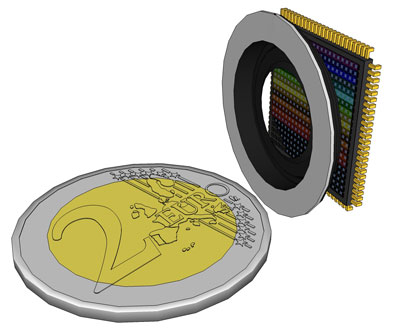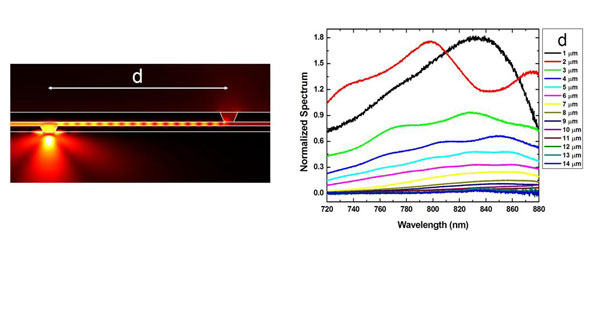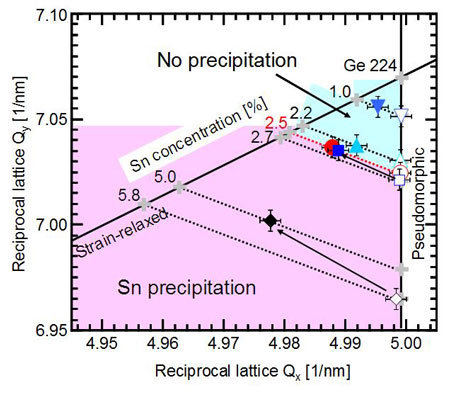The NanoKTN is pleased to announce the first event from its NanoMed focus group. The event will examine areas where nanotechnology is already improving clinical practice and also where the technology will be impacting healthcare in the near and distant future.
Jun 23rd, 2010
Read more
Researchers at the nanotechnology research centre imec (Leuven, Belgium) have demonstrated biosensors based on novel nanostructure geometries that increase the sensitivity and allow to detect extremely low concentrations of specific disease markers.
Jun 23rd, 2010
Read more
The fuel cell vehicle (FCV) is one new technology that might be a viable alternative to the predominant vehicle on the road. However, many challenges remain.
Jun 22nd, 2010
Read more
A sensitive measuring device must not be dropped - because this usually destroys the precision of the instrument. A team of researchers including scientists from the Max Planck Institute of Quantum Optics has done exactly this, however. And the researchers want to use this experience to make the measuring instrument even more sensitive.
Jun 22nd, 2010
Read more
What could be better than diamond when it comes to a superhard material for electronics under extreme thermal and pressure conditions? Quite possibly BC5, a diamond-like material with an extremely high boron content that offers exceptional hardness and resistance to fracture, but unlike diamond, it is a superconductor rather than an insulator.
Jun 22nd, 2010
Read more
In an important advance, scientists at the Tokyo Institute of Technology have created a stable, rewritable memory device that exploits a liquid crystal property called the 'anchoring transition'.
Jun 22nd, 2010
Read more
Mayo Clinic and the University of Illinois at Urbana-Champaign are announcing a strategic alliance designed to promote a broad spectrum of collaborative research, development of new technologies and clinical tools, and design and implementation of novel education programs.
Jun 22nd, 2010
Read more
By emulating nature's design principles, a team of researchers has created nanodevices made of DNA that self-assemble and can be programmed to move and change shape on demand. In contrast to existing nanotechnologies, these programmable nanodevices are highly suitable for medical applications because DNA is both biocompatible and biodegradable.
Jun 22nd, 2010
Read more
The focus of the conference is on revealing the relationships between adhesion and friction at the nano- and micro-scales as well as on mechanisms of energy dissipation in tribological systems.
Jun 22nd, 2010
Read more
Thailand's National Nanotechnology Center (NANOTEC), National Institute of Metrology (NIMT) and Ministry of Science and Technology have announced that they would form the country's first research collaboration to build Thailand's capabilities in providing quality infrastructure in areas related to nano-scale measurement, calibration, and nanometrology.
Jun 22nd, 2010
Read more
Dr Jennifer Lippincott-Schwartz (NIH, US) - a pioneer of super resolution imaging - will give the opening Plenary Lecture at MICROSCIENCE 2010 in London's docklands on Tuesday 29th June 2010.
Jun 22nd, 2010
Read more
The Freiburg Materials Research Centre (FMF), which is part of the University of Freiburg, recently celebrated its 20th anniversary in the Freiburg Concert Hall. As a central institution of the University of Freiburg, the FMF has been focusing on interdisciplinary basic research and contract research in the field of new materials and materials-related technologies since 1990.
Jun 22nd, 2010
Read more
 Imagine a pen-sized device to check your skin for melanoma. You skim the surface of your skin, and, if necessary, the pen advises you to see your physician to have a closer look at a certain spot. Such a pen would scan your skin, and detect if skin cancer is developing, even in an early stage. It would distinguish between healthy and suspicious spots, even if you can see no difference.
Imagine a pen-sized device to check your skin for melanoma. You skim the surface of your skin, and, if necessary, the pen advises you to see your physician to have a closer look at a certain spot. Such a pen would scan your skin, and detect if skin cancer is developing, even in an early stage. It would distinguish between healthy and suspicious spots, even if you can see no difference.
Jun 22nd, 2010
Read more
 Imec has fabricated electrical sources of surface plasmons, based on integrating light emitting diodes with metal-insulator-metal (MIM) waveguides. These sources, together with earlier work demonstrating plasmon detectors, are a prerequisite for making an interface between electronics and plasmonic circuits. This will lead the way to fully integrated plasmonic biosensing.
Imec has fabricated electrical sources of surface plasmons, based on integrating light emitting diodes with metal-insulator-metal (MIM) waveguides. These sources, together with earlier work demonstrating plasmon detectors, are a prerequisite for making an interface between electronics and plasmonic circuits. This will lead the way to fully integrated plasmonic biosensing.
Jun 22nd, 2010
Read more
 GeSn materials show promise, for example as embedded source/drain stressors for Ge channels in future pMOS devices. Imec has started a collaboration to assess the possible applications of GeSn materials, and to see how these applications could be implemented. First results show, among others, that GeSn (with 2-8% Sn) materials are compatible with conventional source/drain engineering processes.
GeSn materials show promise, for example as embedded source/drain stressors for Ge channels in future pMOS devices. Imec has started a collaboration to assess the possible applications of GeSn materials, and to see how these applications could be implemented. First results show, among others, that GeSn (with 2-8% Sn) materials are compatible with conventional source/drain engineering processes.
Jun 22nd, 2010
Read more
An ethanol vapor sensor is fabricated using a ZnO nanoparticle film as a coating on a silicon-on-insulator (SOI) microring resonator of 5 micrometer in radius. The sensor can detect ethanol vapor concentrations as low as 100ppm. This achievement successfully demonstrates the potential of SOI technology for the development of sensitive, compact, low-power and inexpensive optical gas sensing devices.
Jun 22nd, 2010
Read more




 Subscribe to our Nanotechnology News feed
Subscribe to our Nanotechnology News feed